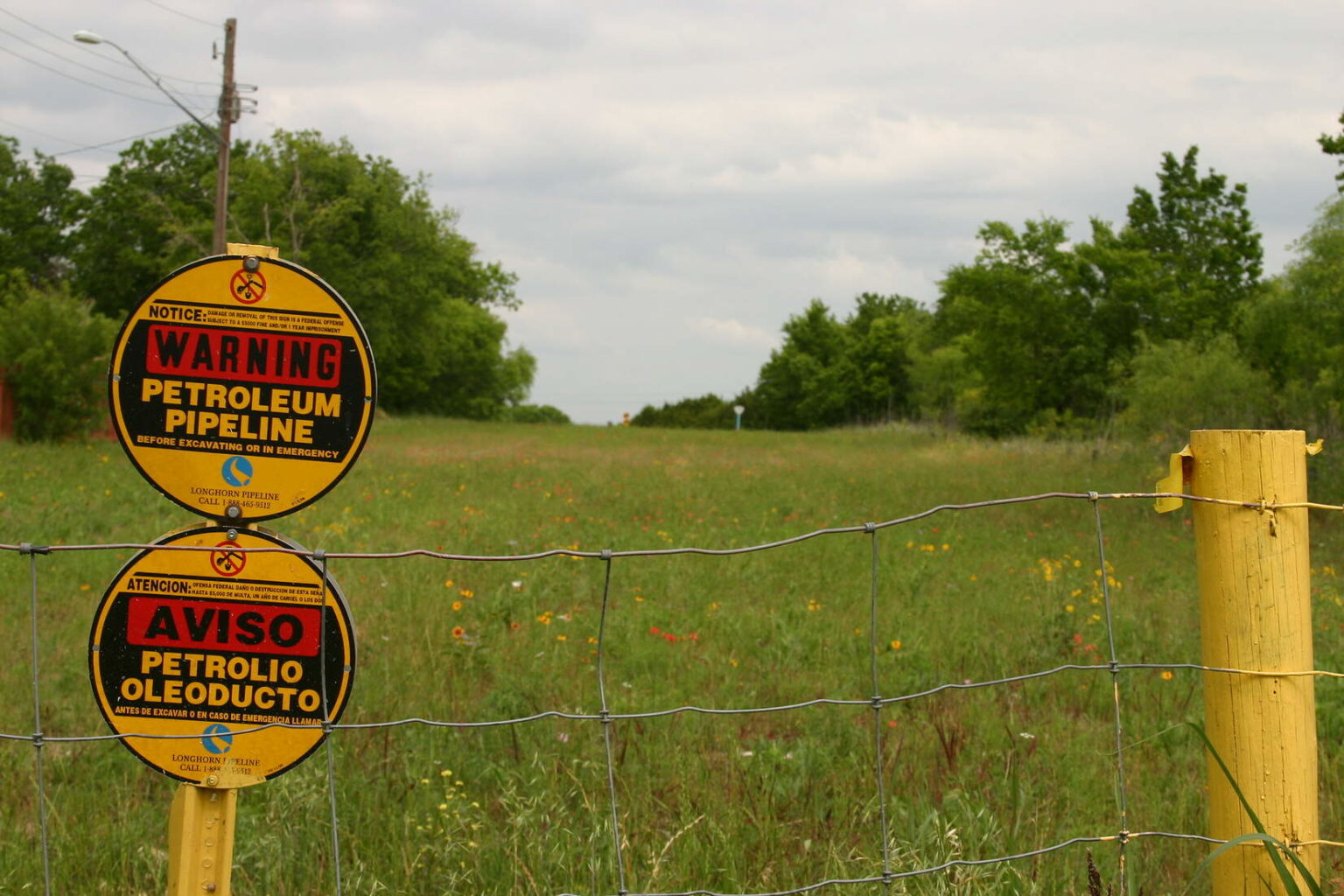At the Glenwood Elementary School in Media, Pennsylvania, roughly 450 students interrupted their regular schedules one day this month for an unusual emergency drill.
Just after 1:30 p.m. on May 3, the entire student body practiced sheltering in place in the school’s gymnasium, then prepared to evacuate the campus by bus, under the watchful eye of the school’s superintendent, state police, and local first responders.
“Everyone took this seriously and it was reflected in how quickly they moved through the drill — two minutes to be sheltered in place and three minutes to be completely evacuated from the building,” Principal Eric Bucci told local reporters.
It wasn’t fears of natural disaster or terror attack that prompted the emergency drill. Instead, worries about a fossil fuel pipeline construction project nearby left the school district drafting emergency response plans and practicing safety protocols.
The school is one of dozens neighboring the route for Sunoco Logistics’ Mariner East 2 pipeline, now under construction and slated for completion this fall. At Glenwood Elementary, the Mariner East project will carry natural gas liquids like butane, propane, and ethane (used to make plastics) through a pipe under a road about 650 feet from the school’s playground — and some parents and safety experts are worried about the risks posed by leaks or other accidents.
Eric Friedman, a safety advocate opposed to the pipeline project told Delaware County, Pennsylvania’s Daily Times News that he was pleased that the school was taking the risks seriously enough to conduct a drill but that he was concerned that the practice highlighted the shortcomings of the district’s plans.
“The exercise raised more questions than it answered and seemed only to demonstrate that [the school district] is unprepared to deal with a large scale release of hazardous, highly volatile liquids near the school,” Friedman, a spokesperson for Middletown Coalition for Community Safety, told the paper.
“Presumably these whole-school emergency evacuation drills will become a regular, disturbing feature of student life at Glenwood,” he added.
Worst-case Scenario: Fireballs
In a worst-case, though still plausible, scenario, a fireball with “a blast radius up to 1,100 feet” could strike at Glenwood “with no notice,” according to a study commissioned by the Middletown Coalition and published in March. Within three minutes, a leak could spread fast enough to create an 1,800 foot fireball, the report adds. Sunoco’s pipeline safety record suggests that locals in densely populated Chester and Delaware counties, suburbs surrounding Philadelphia, should expect a leak of some sort every 7.5 years somewhere in their 25-mile stretch of the 350 mile Mariner East 2 project, the report also predicts.
“Mariner East 2 has no place next to Glenwood or any of the other 40 public and private schools across Pennsylvania that lie within the blast zone,” Eve Miari, another Middletown Coalition spokesperson, told StateImpact. “Even the best emergency plans cannot mitigate the risk to those in an immediate blast zone.”
Across the U.S., a growing pipeline construction boom has meant that more and more people live, study, and work near high-pressure transmission pipelines carrying oil or natural gas.
“The School Pipeline Safety Partnership estimates that approximately one in every 20 schools in the United States is located within a half-mile of a petroleum or natural gas transmission pipeline or aboveground pipeline facility,” the School Pipeline Safety Partnership, which provides a tool allowing schools to find out whether they are close to a mapped pipeline, says on its website. “And yet, pipelines are often overlooked when schools assess risk and create emergency plans.”
The $2.5 billion Mariner East 2 pipeline, will pass through Salem Township, the town where Spectra Energy’s natural gas pipeline exploded last year, hospitalizing one man (who lost part of his leg from burns) and scorching 40 acres of farmland, as DeSmog previously reported.
“Our sliding glass doors melted,” Linda Johnston, a retiree living on a hill above the blast site told TribLive, a local newspaper. “We grabbed our emergency papers and money and the dog and got out.”
Gas Pipelines and Wells in Populated Areas
Pipeline industry advocates emphasize that these sorts of explosions are extremely rare. Sunoco has cited a study on the safety of Mariner East 2 by Accufacts Inc., a consulting firm, which concluded that the project “meets or exceeds the prudent technical approaches commensurate with the safe transportation of natural gas liquids.”
Jeff Shields, a spokesperson for the company, has criticized the Middletown Coalition study, saying that most leaks do not end up in catastrophic explosions but are small and quickly contained. The company also plans to install modern shutoff devices and other safety equipment.
Sunoco’s Mariner East 1 pipeline, built in 1913 and mostly 8 inches in diameter, already runs along much of the route where the 20 inch diameter Mariner East 2 will be built. But while Sunoco has cited that long track record as evidence of the pipeline’s safety, some are concerned that the expansion project not only brings new risks, it also represents the construction of new infrastructure in an area far more densely populated than it was in 1913.
“Now, the right of way is 20 feet from homes,” Lynda Farrell, executive director of the Pennsylvania-based Pipeline Safety Coalition, told StateImpact. “We told Sunoco three years ago that it’s a really bad idea, and we continue to think it’s a really bad idea to continue to build out infrastructure in high-consequence areas.”
Sunoco’s safety record has also prompted concern. As of January, eight town-level governments along Mariner East 2’s route had passed resolutions or proclamations calling attention to Sunoco Logistic’s 263 spills of hazardous materials in the past decade or so, more than any other company, based on records from the Pipeline and Hazardous Materials Safety Administration. On May 10, a construction accident associated with the Mariner East pipeline project sullied Chester Creek, and while initial reports indicated that the contamination was “made of clay and water,” local activists noted that drilling “mud” often contains chemical additives and have called for more detailed information about the spill to be made public.
A month ago, a massive explosion in Firestone, Colorado, highlighted the deadly potential of pipeline blasts and the risks involved when homes or other buildings are located close to natural gas infrastructure. Two men were killed and one women was hospitalized after a pipeline leak ignited in a Colorado home on April 17.
“The house just split open,” 10-year old Gillian Chapman, who was on the front porch at the time of the blast, told a public radio station. “You could see the upstairs.”
The type of natural gas liquids associated with the Mariner East project also have a troubling safety record, if you look far back in history, to a time when the oil and gas industry was much less regulated.
At 3:05 p.m. on March 18, 1937, a natural gas explosion minutes before the school day’s final bell killed nearly 300 schoolchildren at the Consolidated School of New London, Texas, prompting a range of safety reforms for the oil industry. The school, located in the heart of an East Texas oilfield, had been burning so-called “wet gas,” or natural gas laden with liquids like propane and butane, on campus to save money on its utility bills. That “wet gas” is similar — but not identical — to the fluids expected to be carried in the modern Mariner East 2 pipeline.
Weighing Risks
Pipeline safety experts emphasize that compared to other options, like hauling fossil fuels by train or truck, pipelines are far less likely to suffer catastrophic accidents.
But that has not allayed concerns for some school districts, who noted that while the likelihood of failure is very low, the consequences are potentially severe.
Last year, California’s Somis Union School announced that it would be moving the school to a different building due to aging natural gas pipelines running underneath the school’s facilities, which school officials first became aware of in 2012. “Were it to explode anywhere in this general area our kids would not survive if they were within the first 100 feet,” Dr. Colleen Robertson, Superintendent of Somis School District, told KEYT, a local TV news station last year.
“All we have to go on is the credibility of the gas company,” she added in an interview with The Ventura County Star, “and that sure didn’t go well for Porter Ranch.”
Similarly, for those opposed to the Mariner East project, the stakes are simply too high to allow a transmission pipeline to be built so close to a school.
“An elementary school is sort of like the heart center of the community,” Middletown Coalition’s spokesperson Miari told the Philadelphia Inquirer. “It’s where we send our babies.”
Main image: Pipeline warning flag. Credit: © 2016 Laura Evangelisto
Subscribe to our newsletter
Stay up to date with DeSmog news and alerts







